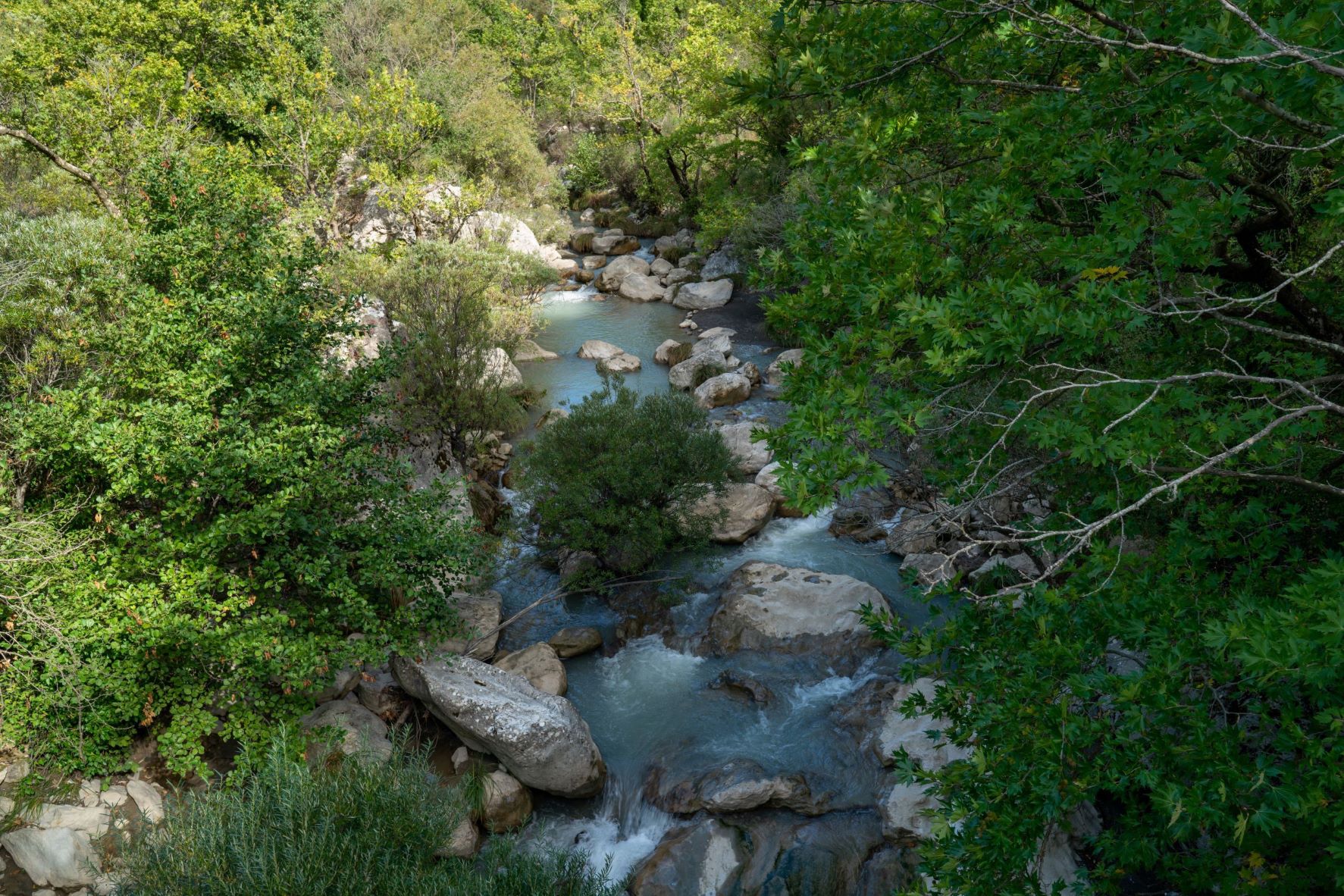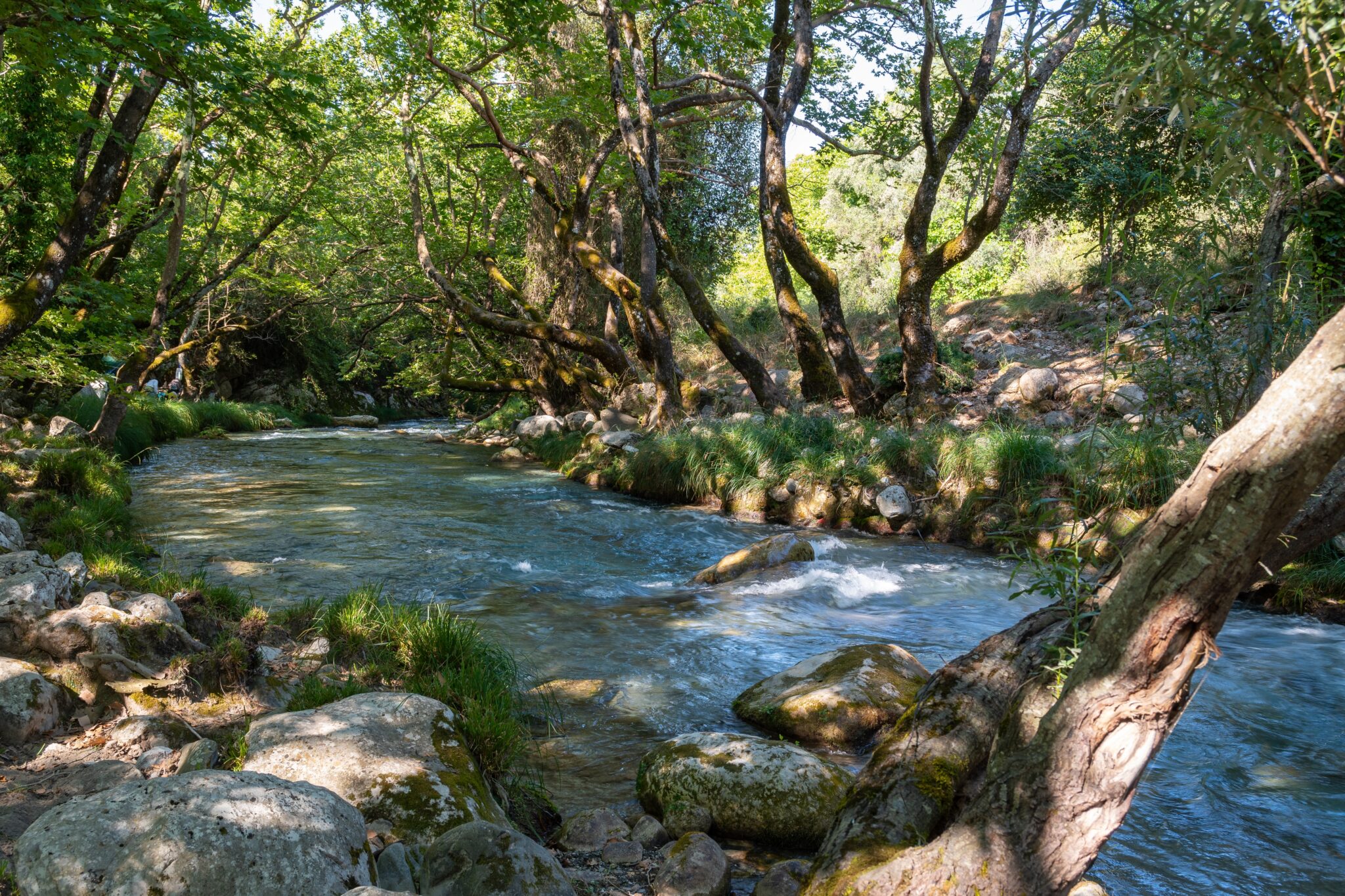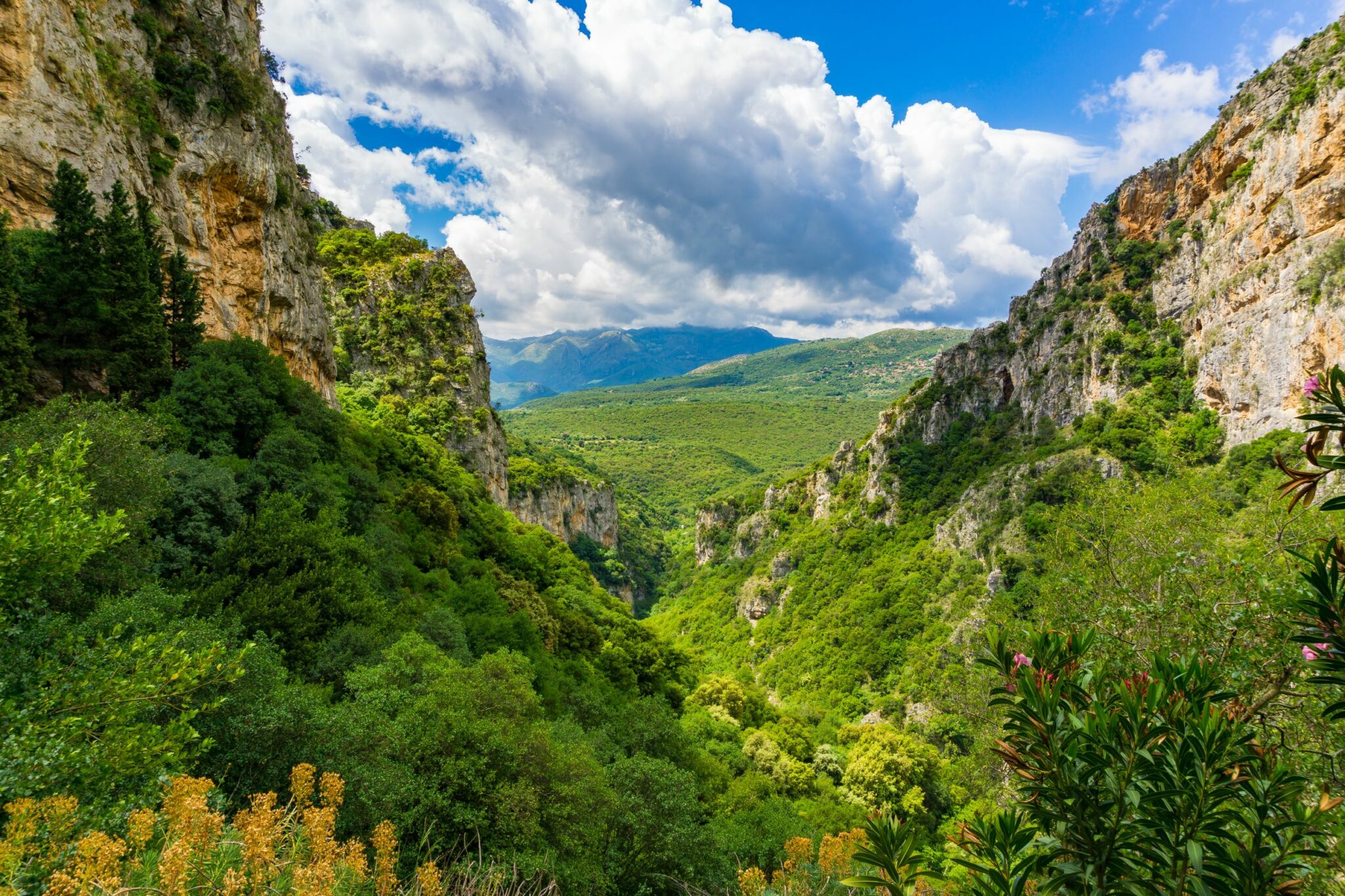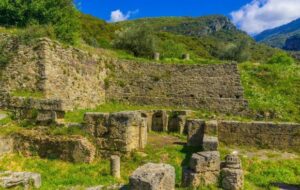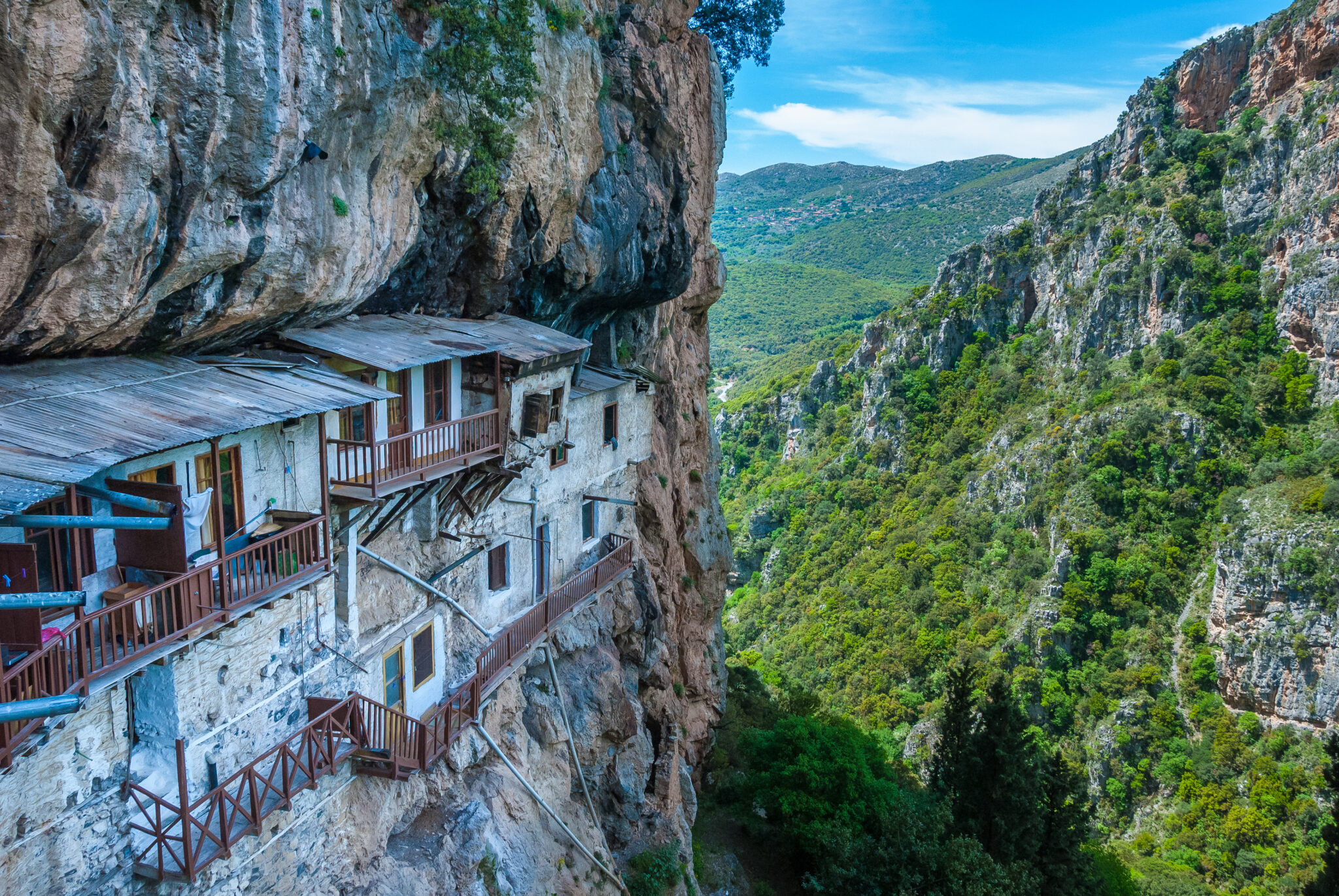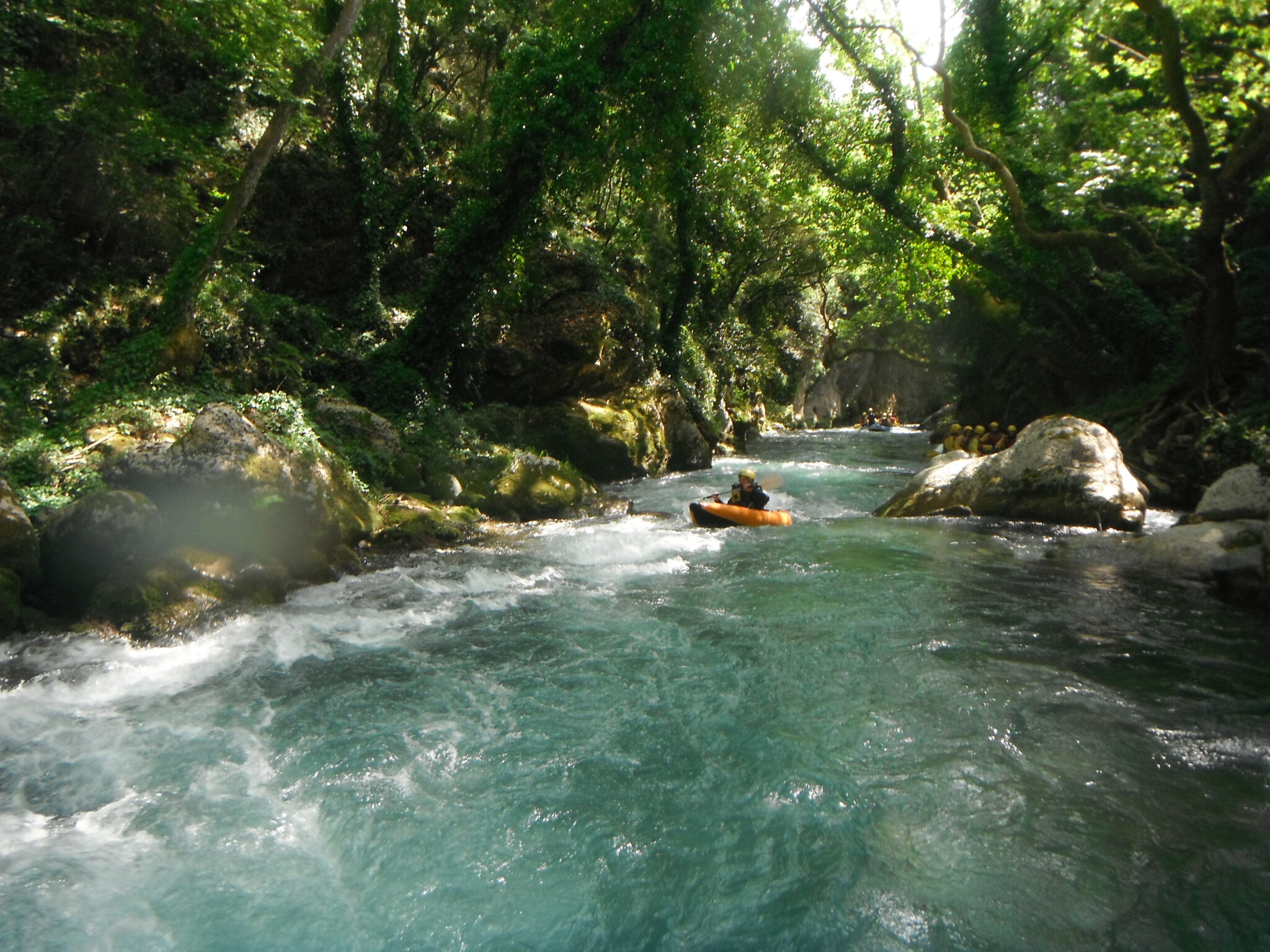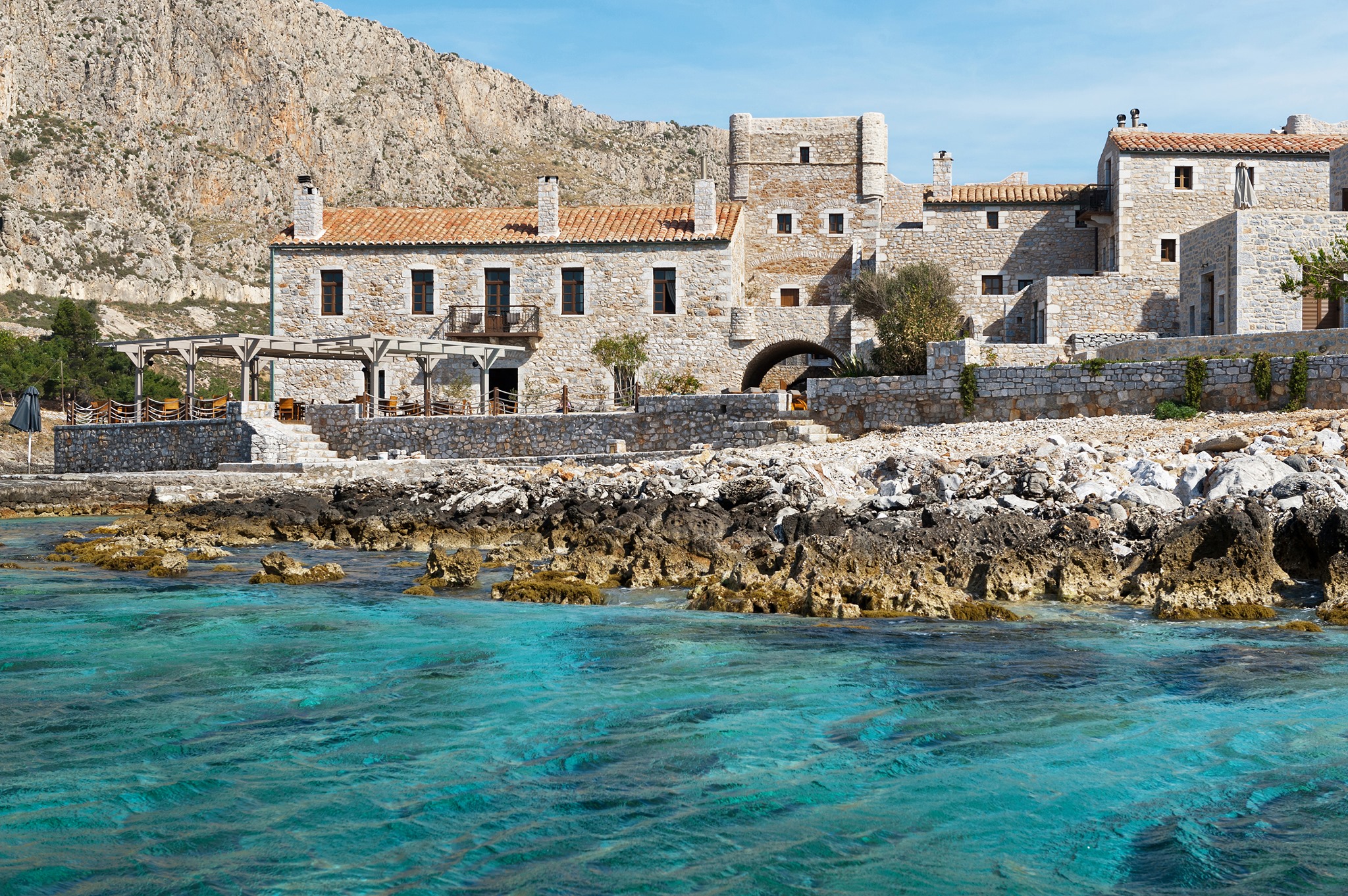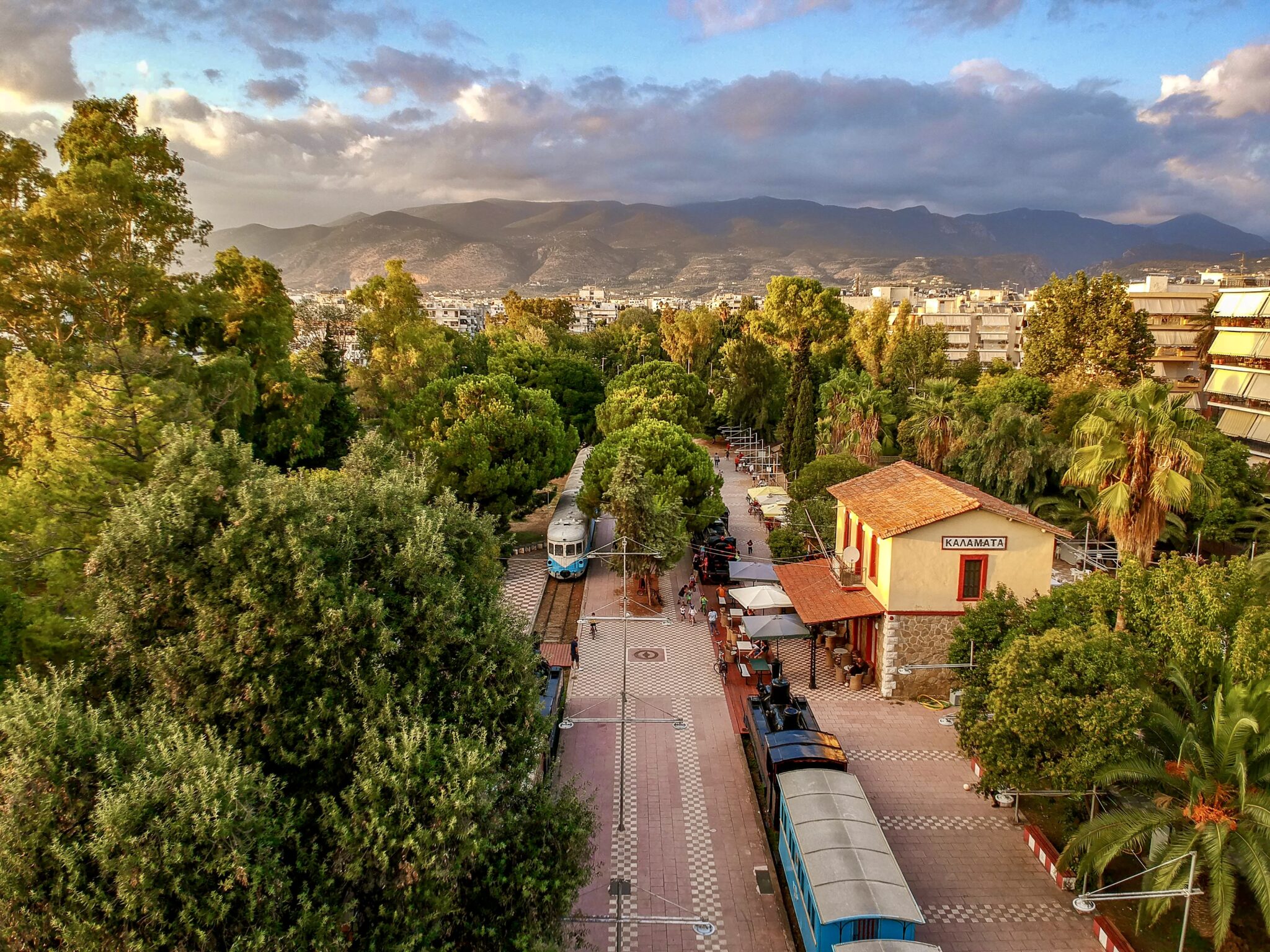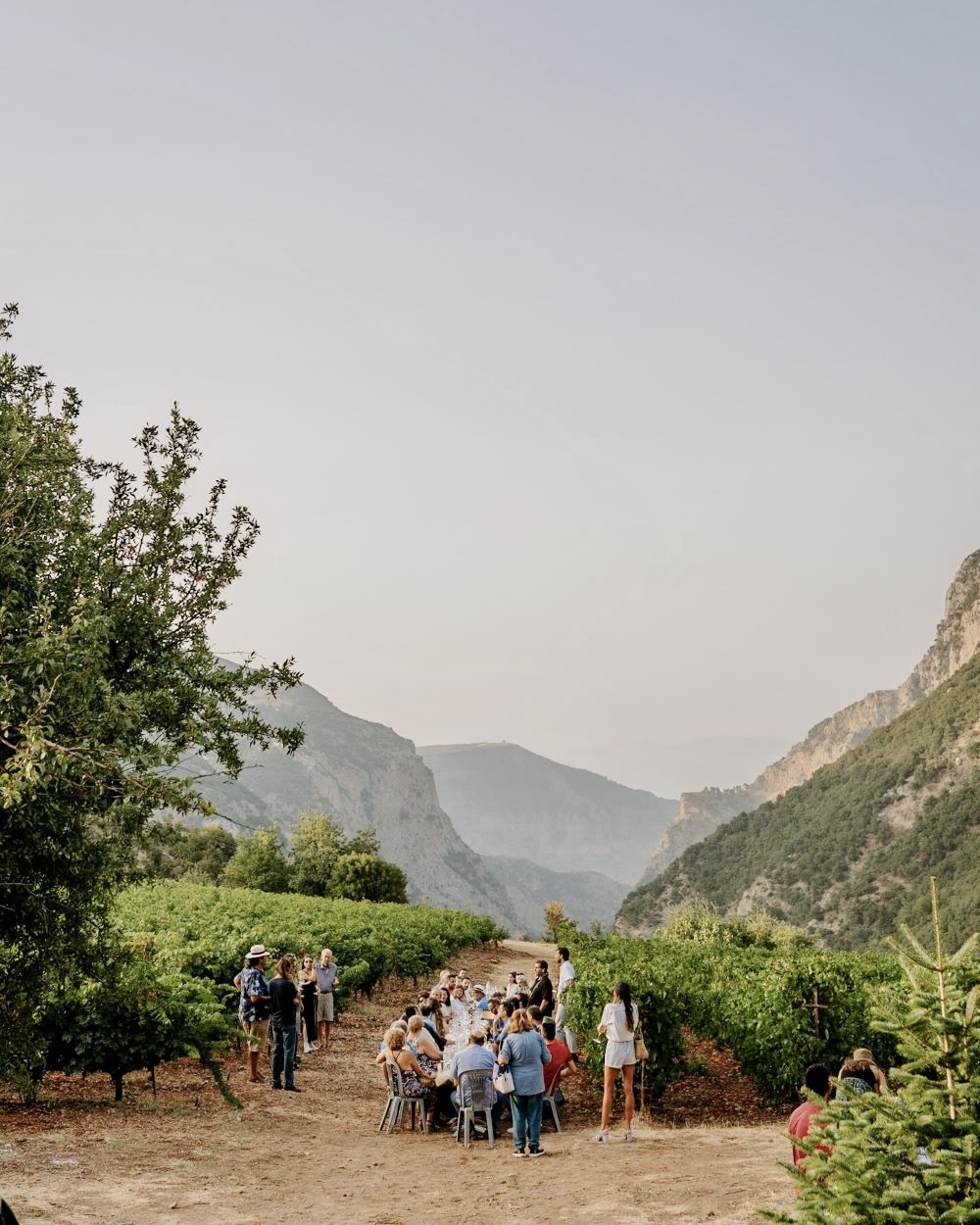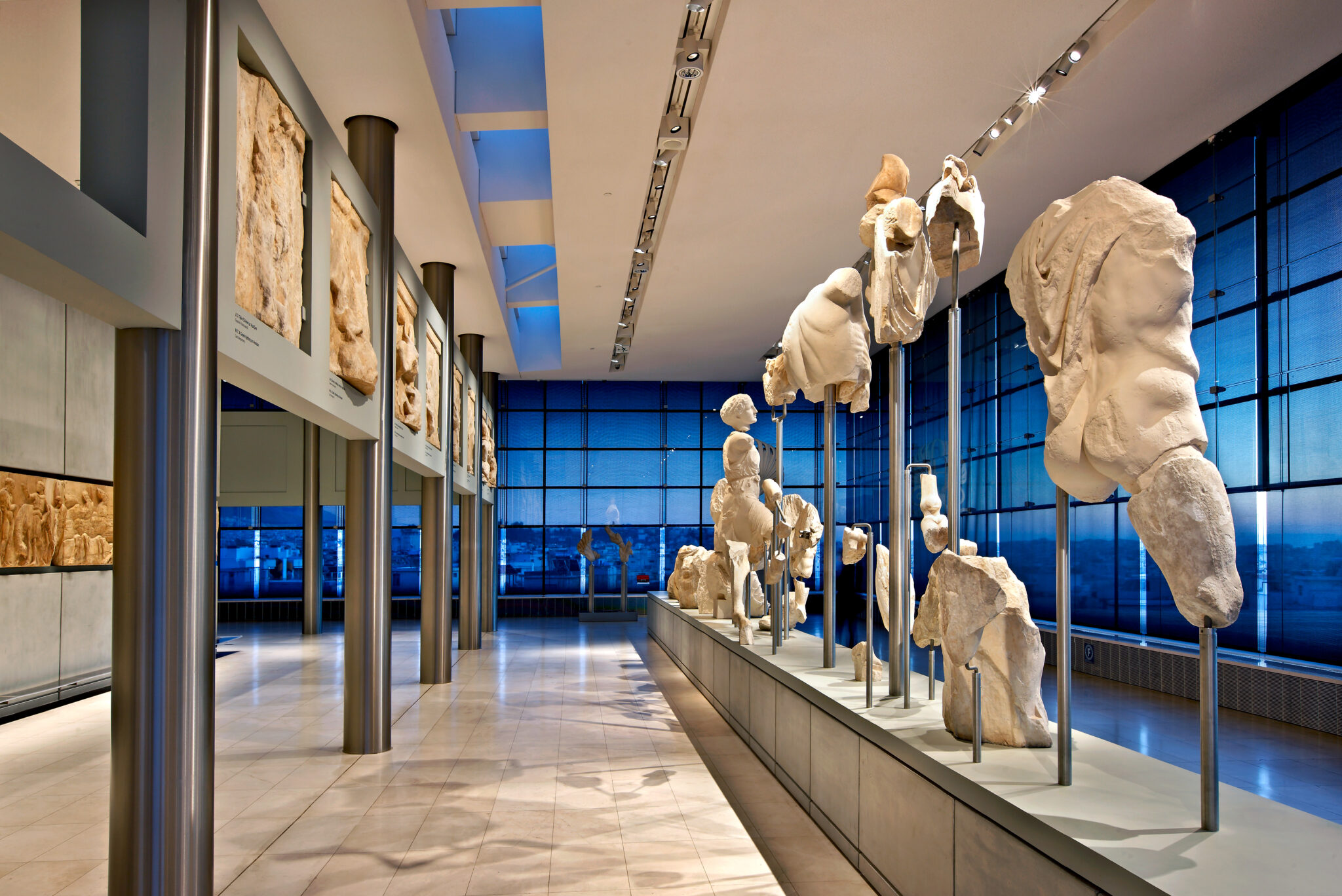Its source is on mount Mainalo, it crosses the villages of mountainous Arcadia and it meets Alfeios river just before Karitaina. Lousios river is about 23km long and is one of the most interesting rivers of the Peloponnese. According to mythology, it got its name due to the fact that the Nymphs bathed new-born Zeus in its waters (in Greek “louzo” means bathe).
The area around the river has a rich history since Ancient Gortyna, a significant city of Arcadia, that thrived in the 4th century BC, was located on its banks. Along there river you’ll also come across many monasteries that were in operation during the Ottoman rule. The most impressive part of the river is the one that starts after Dimitsana until it meets Alfeios, since Lousios goes through an impressive gorge that stretches about 15km. Most sights are located here, including the ancient city and the monasteries, and the gorge and its surrounding area has been declared an archaeological site, as well as a place of environmental interest and it is protected by the Ministry of Culture.
Lousios is a river with strong currents and, in the past, the locals utilized this power by building watermills, tanneries and nerotrives (washing mechanisms). You can learn about the role the river played in the lives of the people in the area at the Open Air Hydrokinesis (Water Power) Museum (Kefalari, Ai Giannis, Dimitsana, tel.: 0030 27950 31630, open daily except for Tuesdays 10:00-17:00, tickets €4).
One of the most thrilling trails in the area is the one that leads from Prodromos monastery to the old and new monastery of Philosophos. Driving from Dimitsana to Stemnitsa, in essence parallel to Lousios that will be on your right, you’ll see signs to Prodromos monastery, and you can park at the end of the road. After a 15-min walk, you’ll arrive at the impressive Prodromos monastery, built on the steep vertical rock. The monastery is about 200m above the river, and it is estimated to have been built in the 16th century. The trail continues towards the old and new monastery of Philosophos on the opposite bank.
You’ll reach the river after walking in the forest, while the roar of its water will become increasingly clearer. Cross a bridge to go to the other side and head towards the monasteries. The first one you’ll come across is the old monastery of Philosophos, founded in 963 AD and a bit further down the road the new monastery of Philosophos that was built in the 17th century. To get to the new monastery of Philosophos and back to your car you’ll need about 2 hours.
Lousios river is the ideal river for rafting. The descent starts at the bridge near the village Atsiholos and ends at the historic stone Koukos bridge, after Lousios meets Alfeios. Its duration is about 4 hours and it’s suitable for all ages over 6, depending on the season and the rainfall.
The first part, on Lousios, is more exciting while once it merges with Alfeios the waters are calmer. There are many companies that organise rafting trips down Lousios and Alfeios who will provide some basic training at first and of course will provide the necessary equipment.
Read also:
3 exciting experiences on Nestos river
Twenty memorable Preveza experiences



